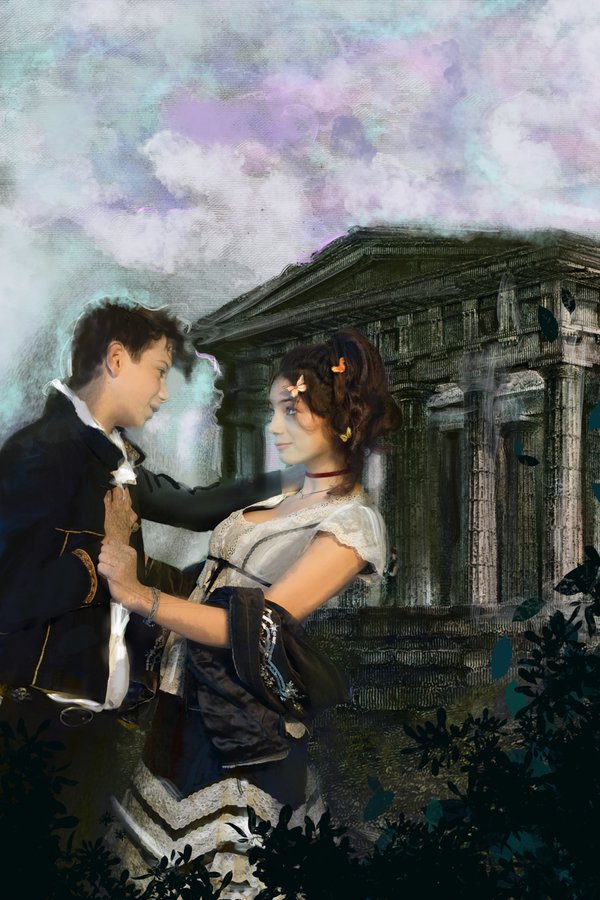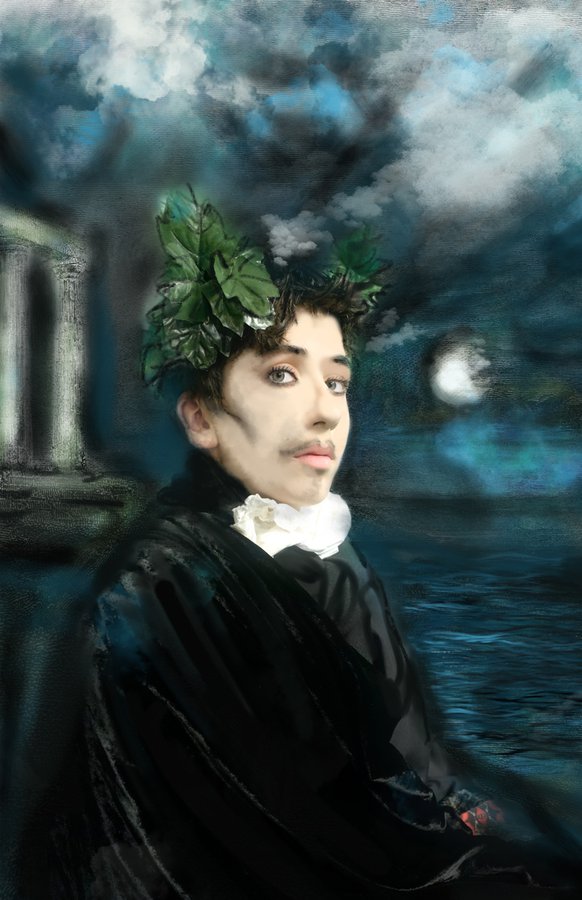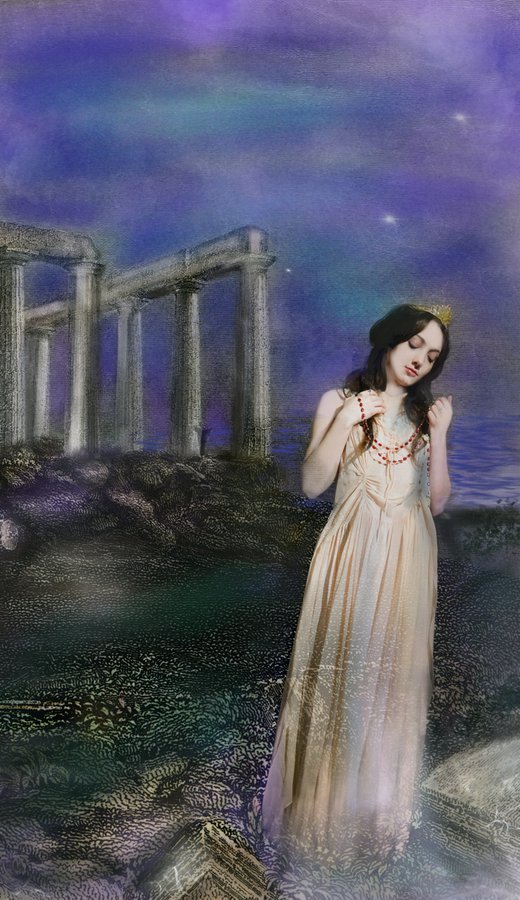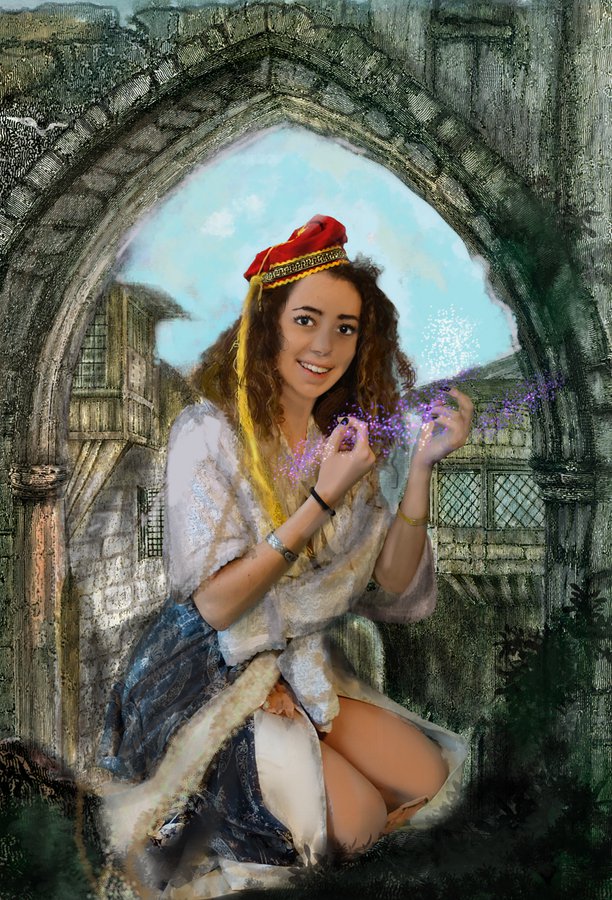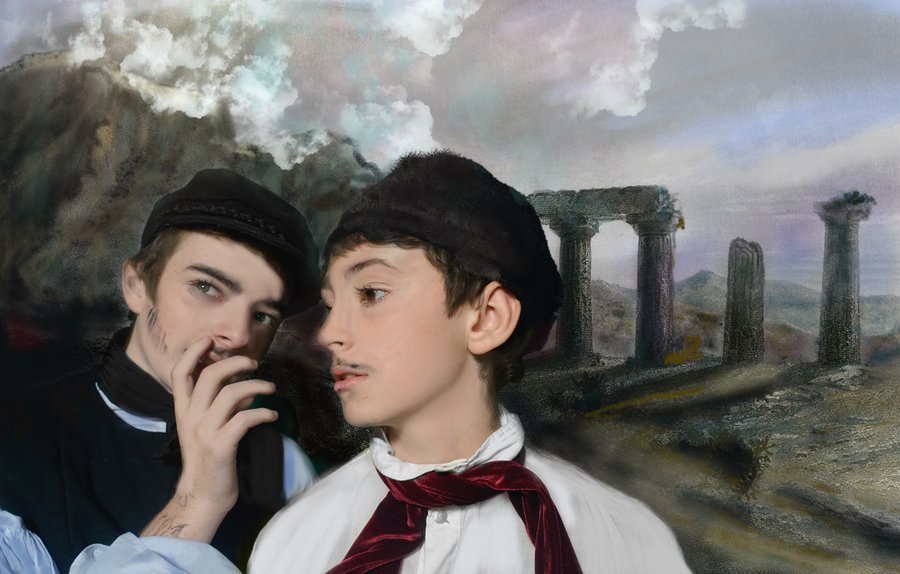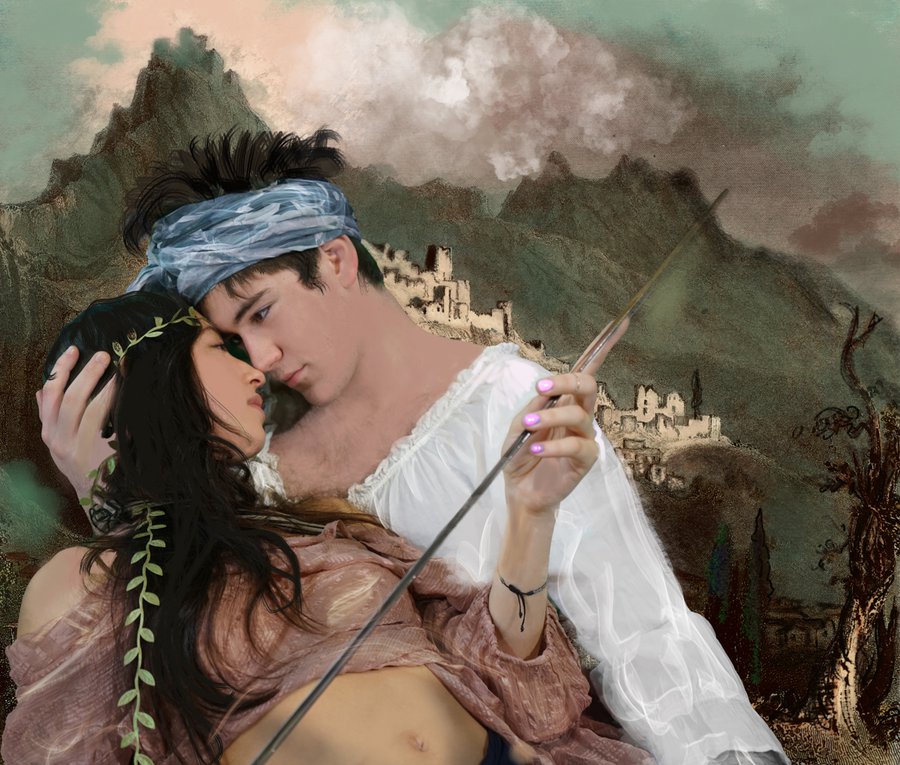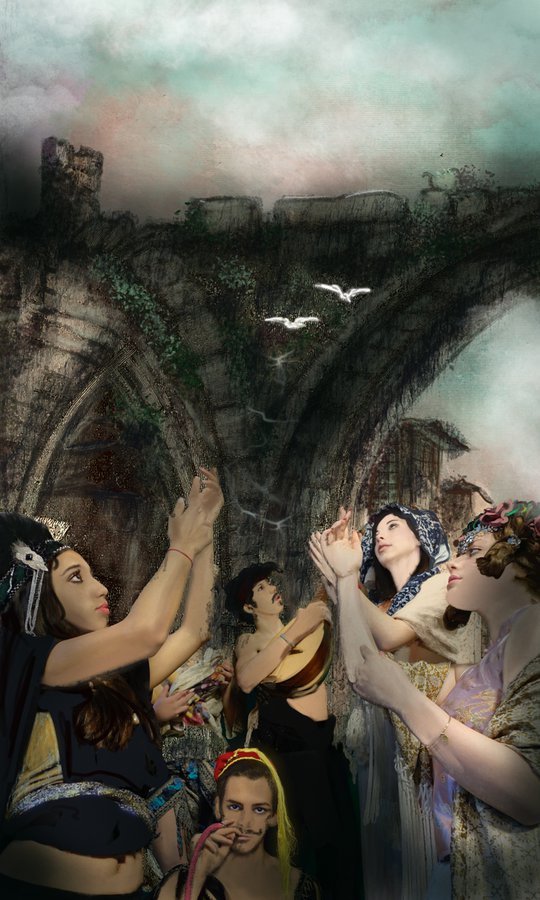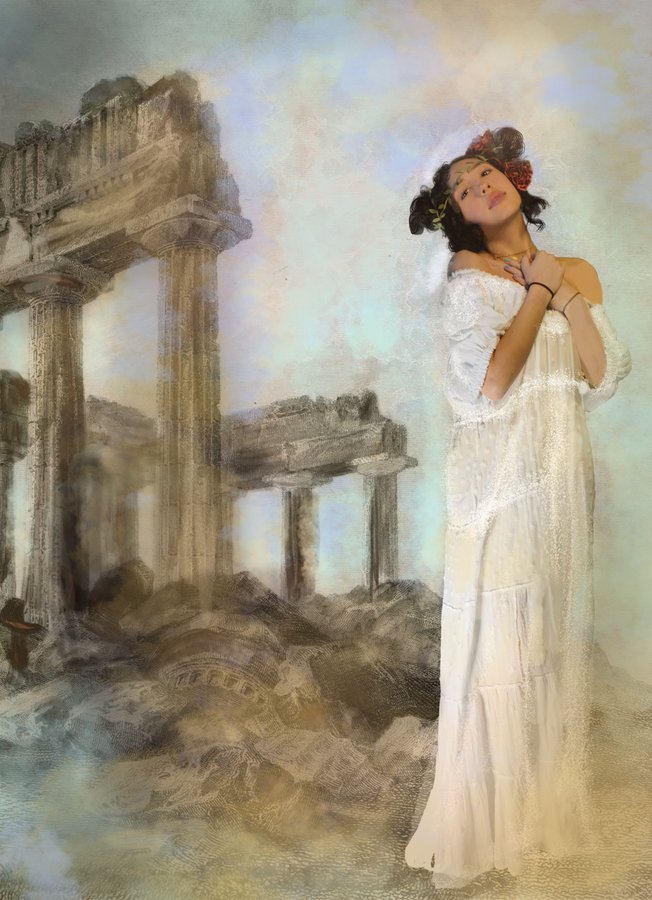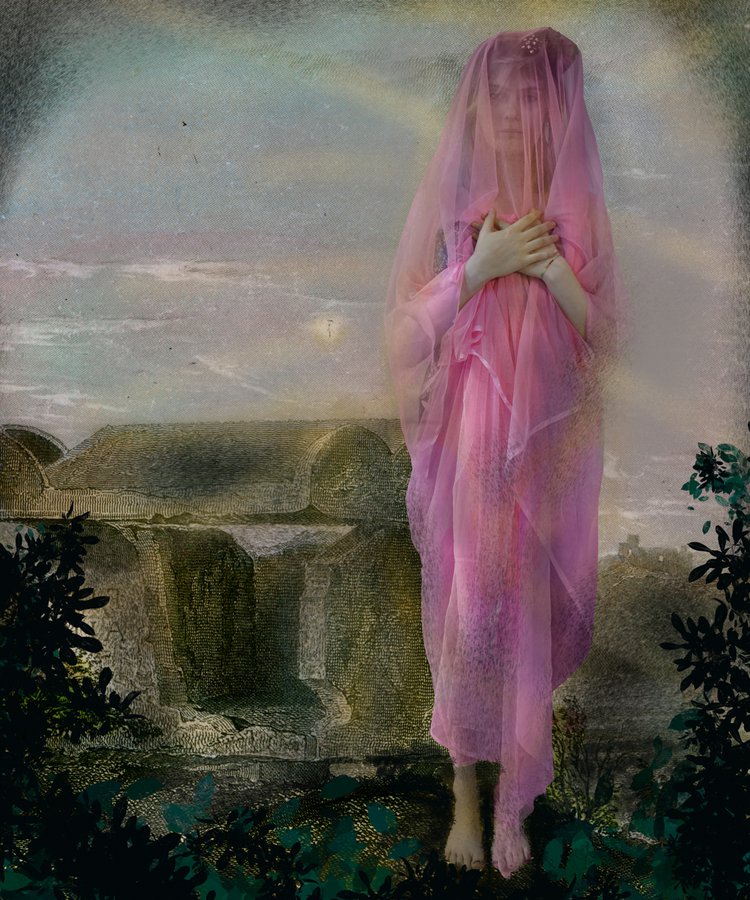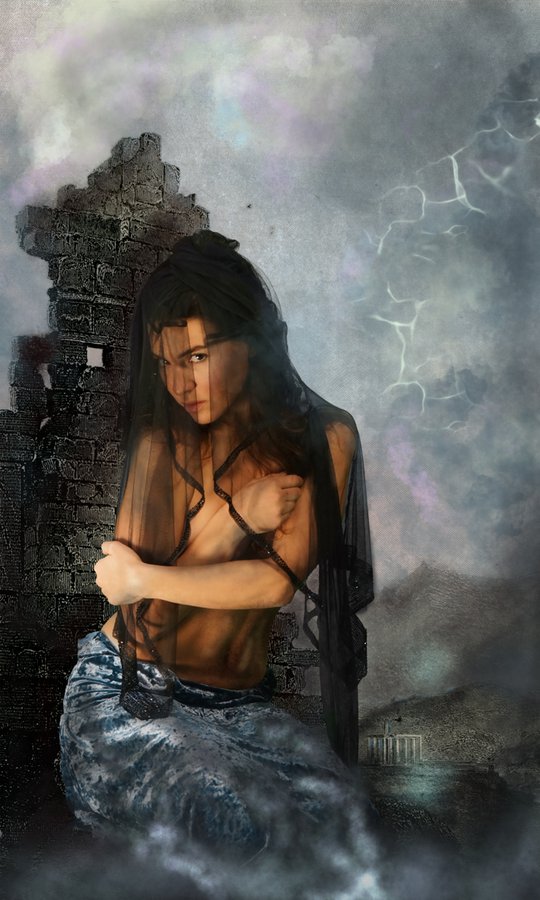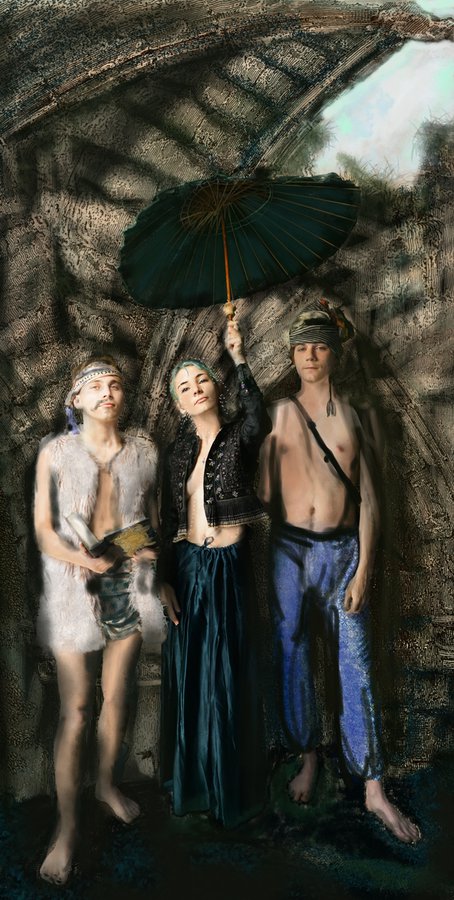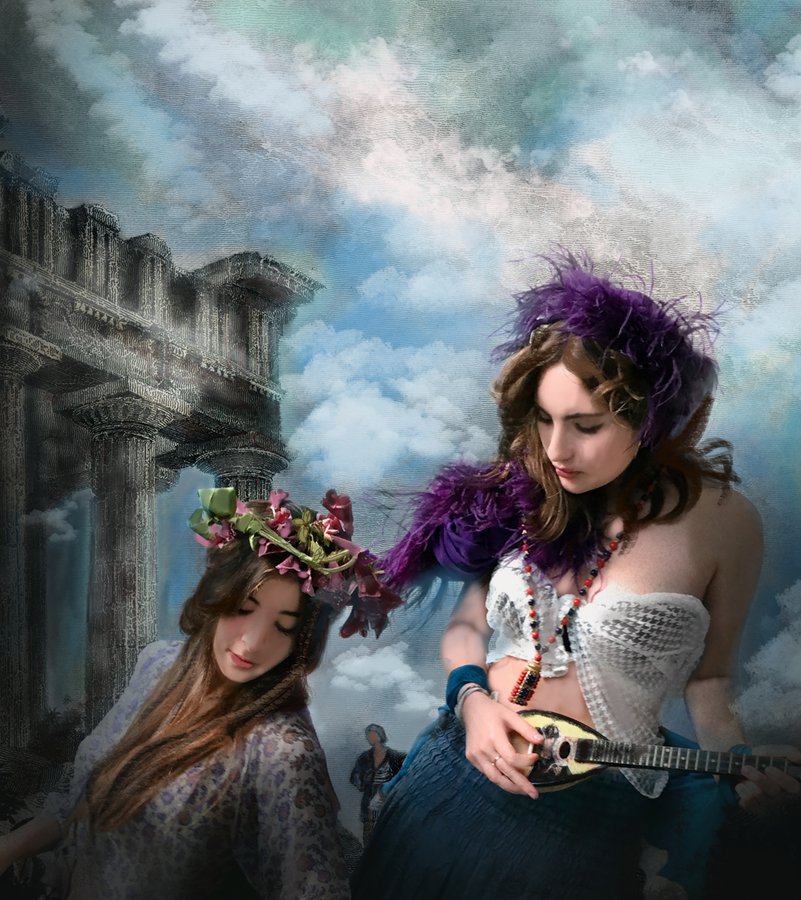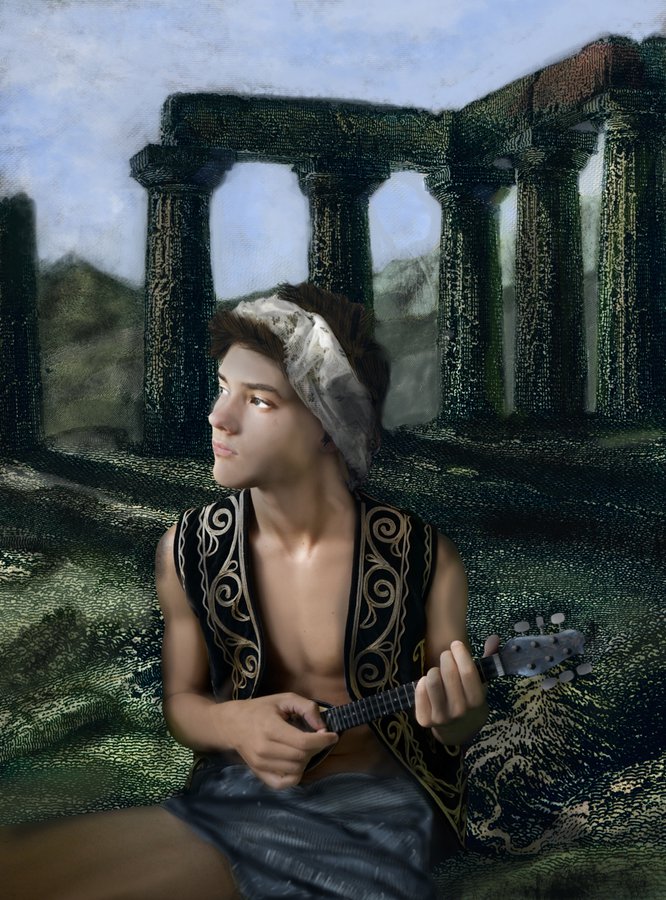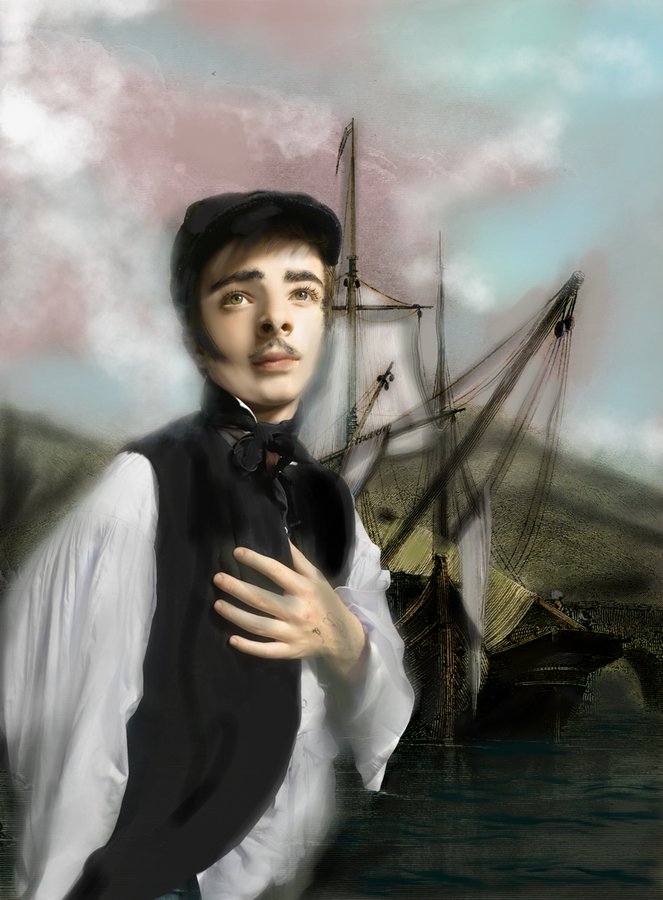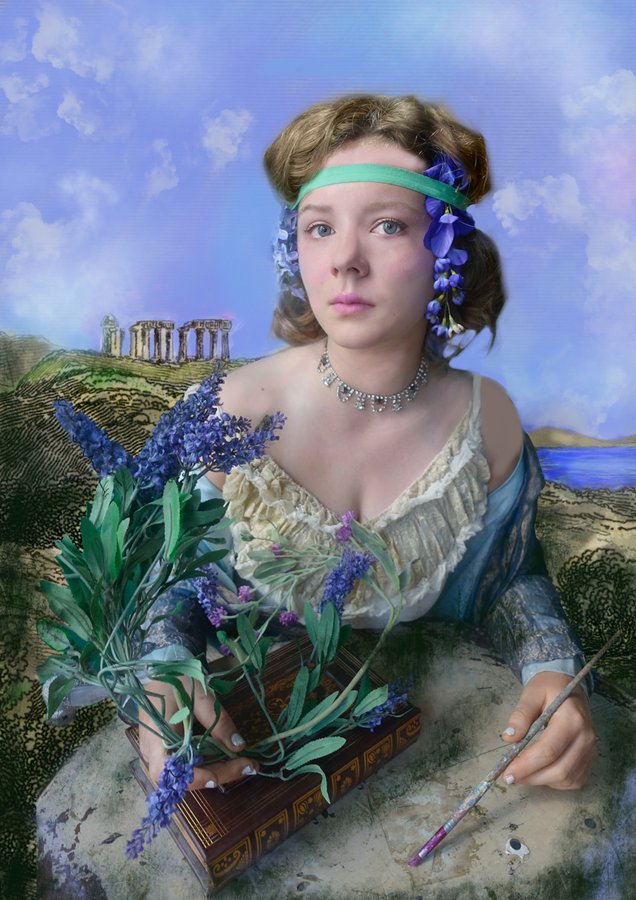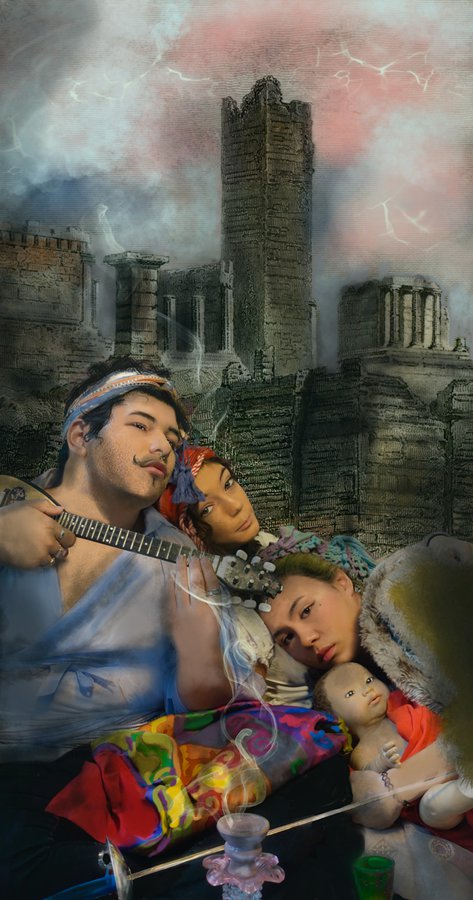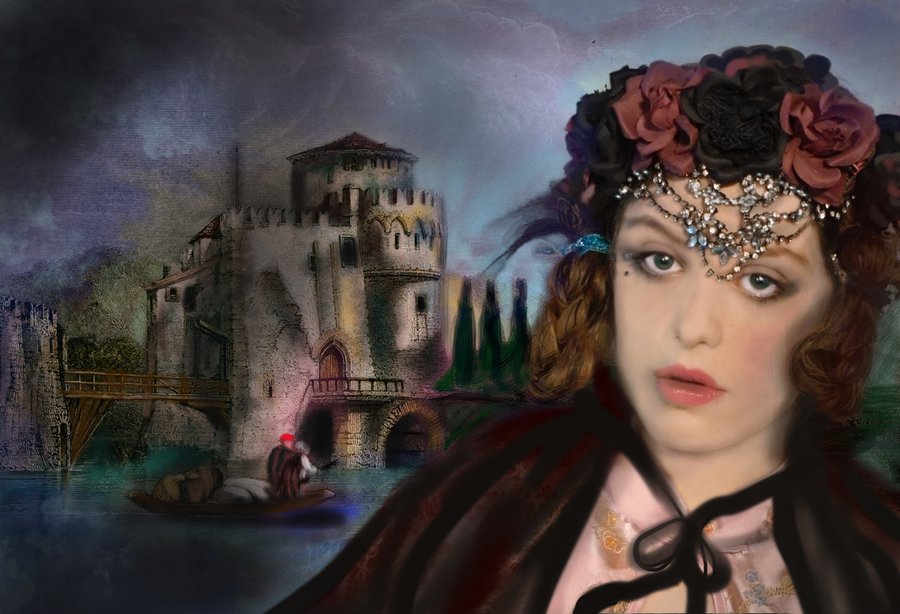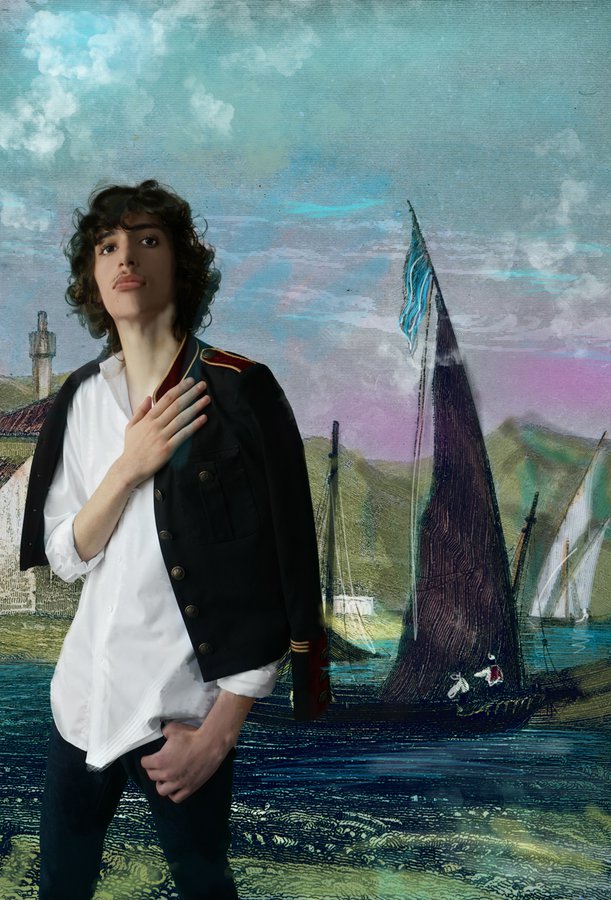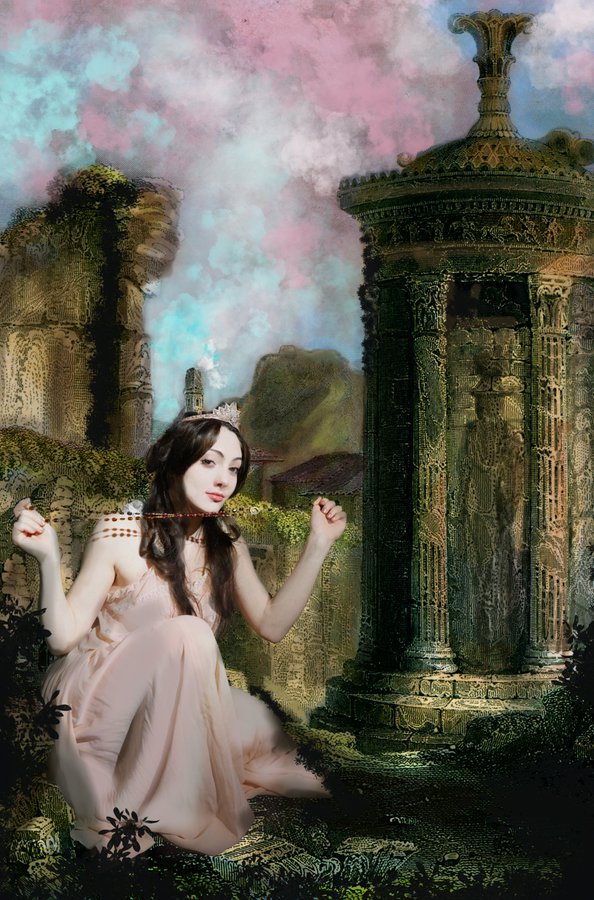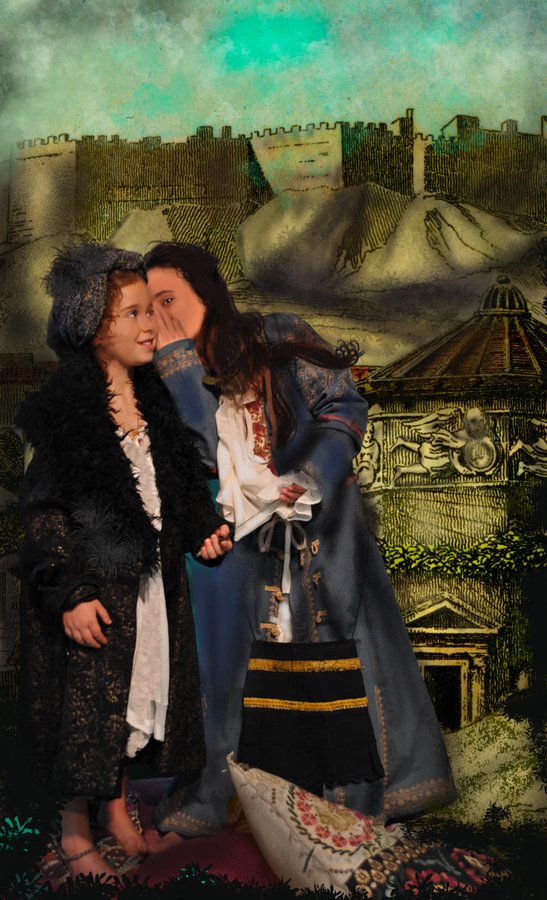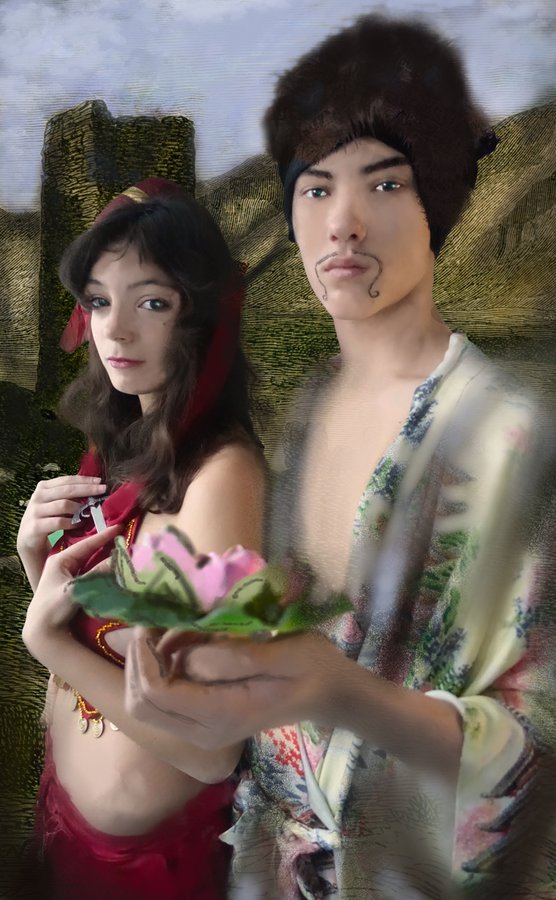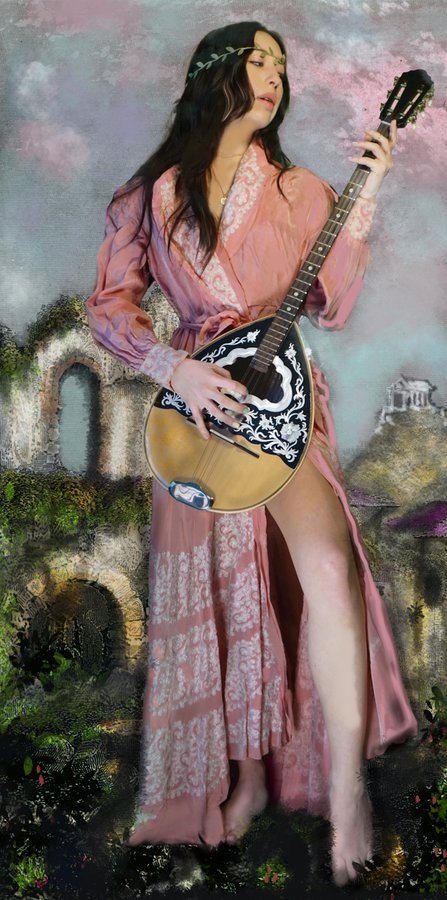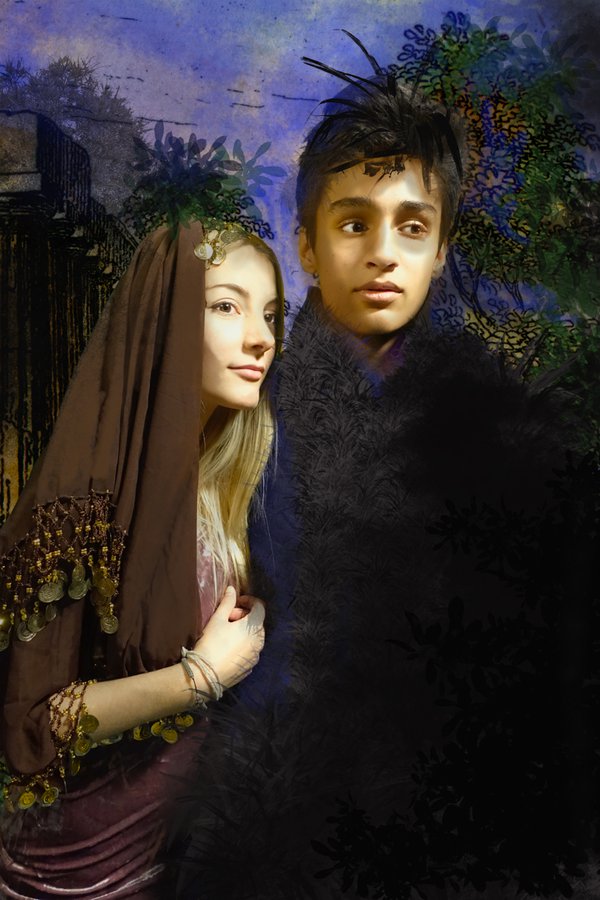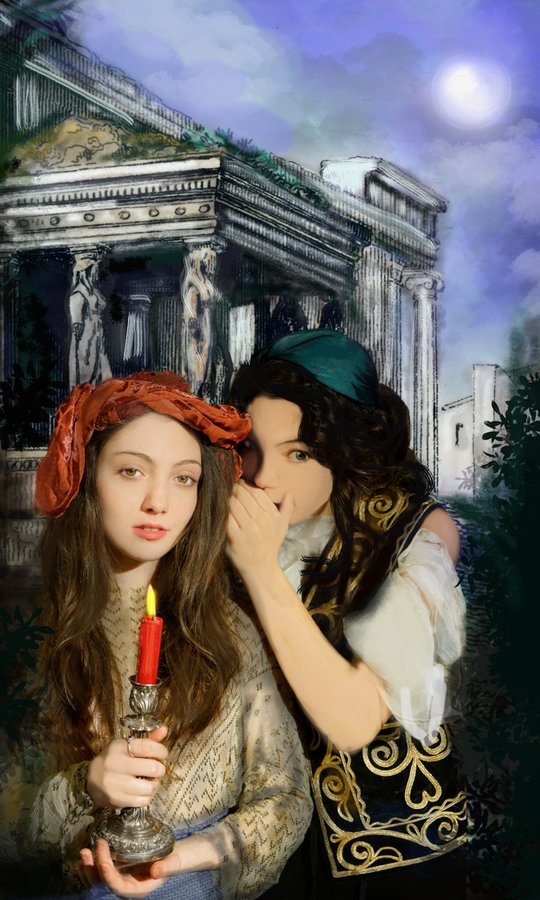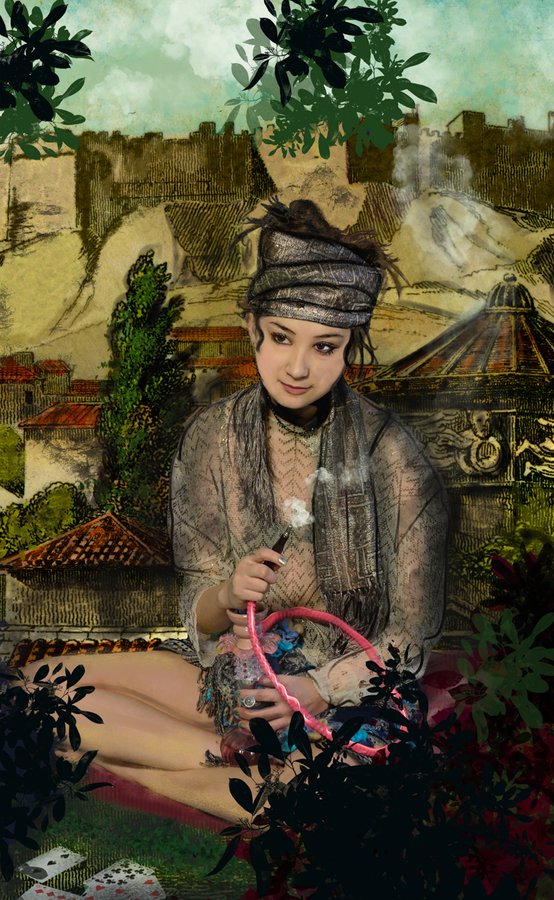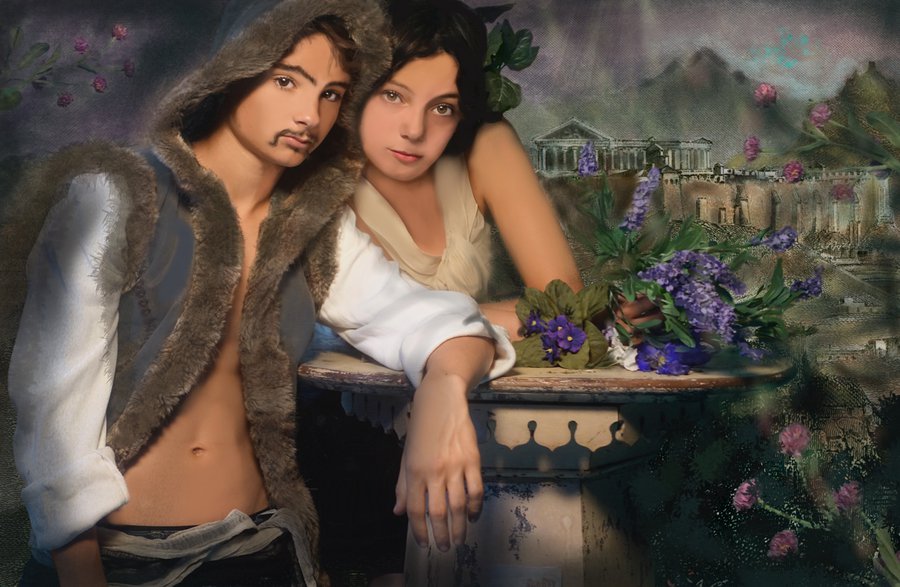ΒΥΡΩΝΙΚΗ ΕΠΟΧΗ - Byronic Era
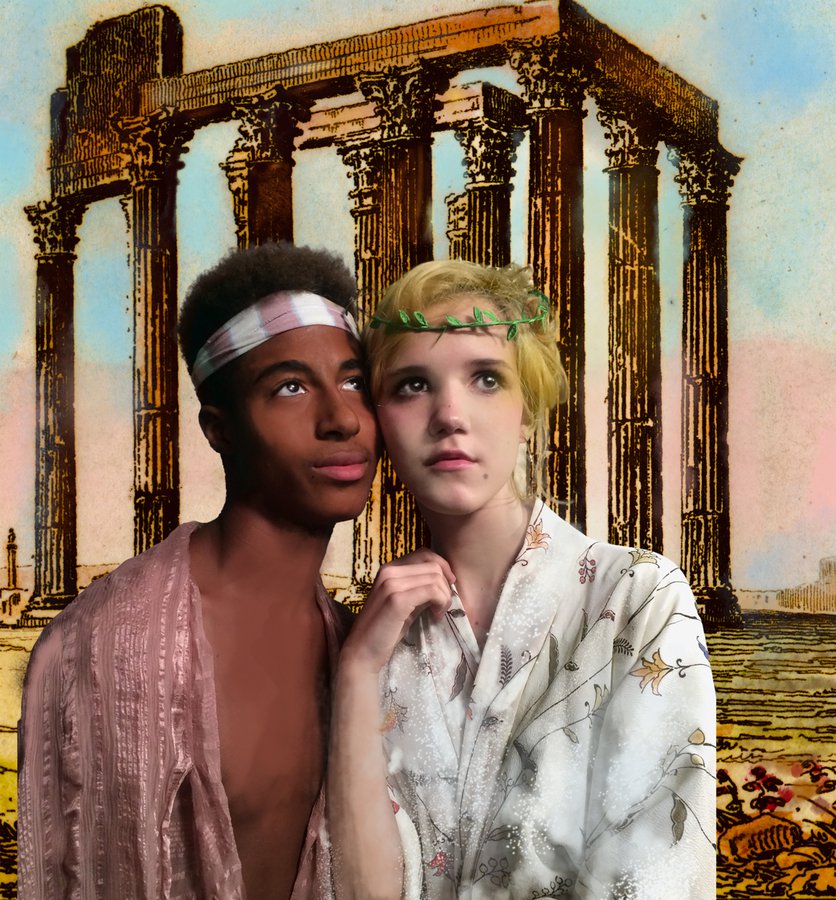
Αγαπητοί φίλοι για όσους αποφεύγουν τα εγκαίνια θα βρίσκομαι το Σάββατο 20/11 στον χώρο σπο τις 12 μέχρι τις 6μμ
Ο Δήμαρχος Αμαρουσίου κ. Θεόδωρος Αμπατζόγλου
και ο Πρόεδρος της Κοινωφελούς Επιχείρησης
Δήμου Αμαρουσίου (ΚΕΔΑ) κ. Νικόλαος Πέππας
σας προσκαλούν
στα Εγκαίνια της Έκθεσης της Λυδίας Βενιέρη, με τίτλο
«ΒΥΡΩΝΙΚΗ ΕΠΟΧΗ»
την Παρασκευή 19 Νοεμβρίου 2021 και ώρα 19:00 στην Ολυμπιακή Δημοτική Πινακοθήκη
«ΣΠΥΡΟΣ ΛΟΥΗΣ»
Βασ. Σοφίας 84, Πλατεία Ηρώων - Μαρούσι
Η πρόσκληση είναι ονομαστική και παρακαλούμε,
λόγω των ισχυόντων υγειονομικών μέτρων,
να δηλώσετε, τη συμμετοχή σας στην ΚΕΔΑ,
χα Κατερίνα Γκίκα, τηλ: 210 8056314.
Η Ενόραση της Λυδίας Βενιέρη: Πορτρέτα σε ιστορική κίνηση
Κείμενο: Δρ. Σωζήτα Γκουντούνα
curated by Sozita Goudouna
Η αισθητική για μένα είναι μια πνευματική, και κυρίως πολιτική πράξη. Ο Μπάιρον είπε ότι γεννήθηκε ως «αντιπολίτευση». Αυτή η δήλωση δείχνει την κριτική του σε κάθε μορφή εξουσίας που όμως ως κοσμοπολίτης αντιμετώπισε γενναιόδωρα. Παρόλα αυτά, ως καλλιτέχνης που όριζε τους χαρακτήρες του, τους βασάνιζε όσο ο Δίας τον Οδυσσέα, και ο πατέρας Του τον Χριστό. Ο ίδιος ο Βύρων, νιώθοντας τη θεική υπόσταση, αγκάλιασε τον Προμηθέα. Οι χαρακτήρες του προτίμησαν την ήττα από τη νίκη, όχι λόγω δειλίας αλλά από ακατανίκητη μελαγχολία. Οι γυναίκες στα ποιήματά του πέρα από την Παναγία, την Αφροδίτη ή την Αθηνά, ενσάρκωναν τη συνείδηση του κόσμου του αλλά και τη μυστηριώδη μοίρα του.
Ο χρόνος είναι το δοχείο της μοίρας μας. Κατ’ επέκταση είναι ένας υπερβατικός μηχανισμός καθώς γίνεται ανασταλτικός, απρόσιτος ή και (αν)ιστορικός.
Ο χρόνος ξεδιπλώνεται για να αποκαλύψει τη σχέση μεταξύ της φυσικής πραγματικότητας, της υλικότητας και του σώματός μας.
 Στο έργο της Βενιέρη, το σώμα μας, το ανθρώπινο σώμα, γίνεται το ιστορικό σώμα καθώς σύγχρονοι χαρακτήρες μετατοπίζονται χρονικά ή γίνονται ιστορικοί ήρωες. Τα έργα της ξεπερνούν εκείνα των περισσότερων καλλιτεχνών στην
ικανότητά τους να εκπέμπουν κίνηση, δηλαδή όχι μόνο την φυσική κίνηση του ανθρώπινου σώματος, αλλά τον εσωτερικό ρυθμό των συναισθημάτων. Ανάμεσα στις πολλές μυστήριες πτυχές τους είναι η απροσδόκητη ζωηρότητα
των εκφράσεων και των χειρονομιών της φιγούρας. Εικόνες αναγκαστικά, στατικές, εγκλωβισμένες στον ιστορικό χρόνο, σε μια νοσταλγία του παρελθόντος,
στα “Τελευταία του λόγια για την Ελλάδα”:
Στο έργο της Βενιέρη, το σώμα μας, το ανθρώπινο σώμα, γίνεται το ιστορικό σώμα καθώς σύγχρονοι χαρακτήρες μετατοπίζονται χρονικά ή γίνονται ιστορικοί ήρωες. Τα έργα της ξεπερνούν εκείνα των περισσότερων καλλιτεχνών στην
ικανότητά τους να εκπέμπουν κίνηση, δηλαδή όχι μόνο την φυσική κίνηση του ανθρώπινου σώματος, αλλά τον εσωτερικό ρυθμό των συναισθημάτων. Ανάμεσα στις πολλές μυστήριες πτυχές τους είναι η απροσδόκητη ζωηρότητα
των εκφράσεων και των χειρονομιών της φιγούρας. Εικόνες αναγκαστικά, στατικές, εγκλωβισμένες στον ιστορικό χρόνο, σε μια νοσταλγία του παρελθόντος,
στα “Τελευταία του λόγια για την Ελλάδα”:
Τι είναι για μένα αυτές οι τιμές ή η φήμη.
Στο παρελθόν ή στο μέλλον, ένας νεογέννητος λαός κλαίει;
Αν και για τέτοια θα μπορούσα να περιφρονήσω ένα στέμμα
Τίποτε εκτός από τη δάφνη, ή για τέτοια θα μπορούσε να πεθάνει.
Είμαι ανόητος του πάθους, και συνοφρυωμένος
Το δικό σου για μένα είναι σαν το μάτι του αθροιστή
Στο φτωχό πουλί που το πινιόν του φτερουγίζει προς τα κάτω
Φέρνει μέχρι θανάτου το στήθος που έφερε τόσο ψηλά:
Τόσο μεγαλώνει αυτή η τρελή γοητεία,
Τόσο δυνατή η μαγεία σου ή τόσο αδύναμος είμαι.
Στην καρδιά της έκθεσης, ωστόσο, βρίσκεται μια άλλη πρωτιά: η Βενιέρη είναι απο τις λίγες εικαστικούς που καταφέρνει να εκφράσει μέσω της θεατρικότητας μια διαφορετική ιστορική αφήγηση της “ελληνικότητας,” με τόσο “ζωντανο,” και ταυτόχρονα σαγηνευτικό και σύγχρονο τρόπο. Η ίδια η «ελληνικότητα» λαμβάνει μια άλλη ερμηνεία και «zeitgeist» στο ονειρικό σύμπαν της εικαστικού, που ξεφεύγει από τα στερεότυπα όπως η ίδια η καλλιτέχνης. Γίνεται πιο πραγματική με το να γίνεται φασματική.
Όπως ο Βύρωνας, η Βενιέρη αποτολμά να διατυπώσει τα δικά της λόγια για αυτό το νεογέννητο κράτος, την Ελλάδα. Το ιστορικό υπόβαθρο γίνεται πανταχού παρόν για τους χαρακτήρες της, αλλά αυτό που προβάλλει είναι οι πράξεις, οι εκφράσεις ακόμη και οι σκέψεις τους. Ως ένας άλλος εμπνευστής της εικονολογίας, όπως η Aby Warburg, η εικαστικός δημιουργεί μια «κριτική εικονολογία» για να αποκαλύψει τον παραλογισμό της εικόνας στον δυτικό πολιτισμό. Οι ήρωές της είναι πεφωτισμένοι της Δύσης ή ιδανικές φιγούρες που συμμετέχουν στον Διαφωτισμό, αλλά η εικαστικός ενδιαφέρεται να αναδείξει τον ανθρωπισμό τους παρά την ηρωική τους τελειότητα. Έτσι, το κριτικό σύμπαν της εμπεριέχει ιστορικούς αναχρονισμούς και ασυνέχειες παρά επιστημονικά αρχέτυπα και κανόνες. Χρησιμοποιώντας μεθόδους «μοντάζ» συγκεντρώνει ή αντιπαραθέτει αναφορές της ιστορίας της τέχνης, που θυμίζουν αριστουργήματα της τέχνης της Φλωρεντινής Αναγέννησης, με καθημερινούς σύγχρονους ανθρώπους. Συμμετέχει σε μια κοινωνία με αυτές τις ιστορικές προσωπικότητες της τέχνης είτε για να ξεπεράσει κριτικά τις αισθητικές ιεραρχίες που καθιερώνουν είτε για να αναπαραστήσει νοσταλγικά τις επιθυμίες, τις δραστηριότητες και τα όνειρά τους.
Ωστόσο, είναι οι πολλαπλές ζωές αυτών των πορτρέτων ως σχέδια, φωτογραφίες ή ακόμα και κινούμενες εικόνες, που έρχονται στο προσκήνιο. Οι χαρακτήρες παρουσιάζονται αρχικά ως δοκιμές στο χαρτί, προκειμένου η εικαστικός να δοκιμάσει τον τρόπο με τον οποίο οι εικόνες θα αναμειχθούν στην αντίληψή της για μια ταινία ή ένα παραμύθι. Δημιουργεί αυτά τα πορτρέτα σε ιστορική κίνηση όπως θα έγραφε ένα κινηματογραφικό σενάριο. Τα πορτρέτα θα μπορούσαν να ενσαρκωθούν σε μια ολοκληρωμένη ταινία, αλλά προϋπήρχαν στις άλλες ζωές τους ως σχέδια. Η Βενιέρη σκιαγραφεί πρώτα τους χαρακτήρες και τα σκίτσα λένε τη δική τους ιστορία ή μια άλλη κριτική ιστορία για την (Ι)στορία. Είναι μια ιστορία που δεν βασίζεται σε σενάρια αλλα στην εκφραστικότητα. Είναι η ιστορία του Βύρωνα ως αρχέτυπου του νεαρού ριζοσπαστικού ποιητή. Ο νέος που εμπνέει αγάπη, που μας δείχνει ότι πρέπει να σχετιζόμαστε με την τέχνη με τον ίδιο τρόπο που σχετιζόμαστε με τους ανθρώπους. Κατ’ επέκταση το επιχείρημα της Βενιέρη είναι υπέρ της αγάπης, αυτής της αγάπης που στρέφεται ενάντια σε αυτό που αποκαλεί επιφανειακή ερμηνεία της ιστορίας και της πολιτικής ή την αντίληψη της τέχνης ως κορεσμένης από κοινές αντιλήψεις για την κοινωνία. Για την εικαστικό η έννοια του έργου τέχνης είναι ενδημική της εμπειρίας και η έκθεση διέπεται από αυτές τις συναρτήσεις καθώς υπερβαίνει την τέχνη για να μετατραπεί σε εμπειρία.
Crystal Gazer Lydia Venieri and The Art of Experience
Dr. Sozita Goudouna
Lydia Venieri traces the epic story of Lord Byron set in a multi-temporal spectral landscape, intertwining the theme of a biography with those of history and poetic creation to proclaim a new, indeterminate “art of experience” rather than representation. An ambitious ensemble project “Specters of Byron,” comprises monumental photos and a series of portraits orchestrated or choreographed in a meticulous, even filmic, composition by the artist. The seed of this new work was sown as far back as 2011. The artist, in her clairvoyant and crystal gazer words, states that:
“Aesthetics for me is a spiritual, a political act. Byron said that he was born as an “opposition.” This statement shows his criticism in any form of power that, however, as a cosmopolitan, was handled generously. Nevertheless, as an artist who ruled his characters, he tormented them as much as Zeus, Odysseus and his father, Christ. Byron himself, feeling divinity he embraced Prometheus. His characters preferred defeat to victory, not due to cowardness but out of invincible melancholy. The women in his poems beyond the Madonna, Aphrodite or Athena, embodied the consciousness of his world but also his mysterious fate.”
Time is the vessel of our fate. Thus, it is an unsettling mechanism as it becomes suspended, inaccessible or even (a)historical. Time unfolds to reveal the relationship between the physical reality, materiality, and our body.
Portraits in Historical Motion
In Venieri’s oeuvre, our body, the human body, becomes the historical body as contemporary figures shift into, or become, historical heroes. Her pieces go beyond those of most artists in their ability to convey motion, namely, not only the physical motion of the human body,
but rather the internal rhythm of the emotions. Among their many astonishing aspects is the unexpected vividness of the figure’s expressions and gestures. Images that are of necessity, static, trapped in historical time, in a nostalgia of the
past, nevertheless, seem to unfold in time before us. As if they are truly reciting or enacting Byron’s poetic texts in
What are to me those honours or renown.
Past or to come, a new born people's cry?
Albeit for such I could despise a crown
Of aught save laurel, or for such could die.
I am a fool of passion, and a frown
Of thine to me is as an adder's eye
To the poor bird whose pinion fluttering down
Wafts unto death the breast it bore so high:
Such is this maddening fascination grown,
So strong thy magic or so weak am I.
At the heart of “Specters of Byron,” however, is another first: no Greek artist has included this newly ubiquitous aesthetic “technology” of formulating a “theatricality of time-lapse” in relation to Greek historic narrative, in such a vivid, and at the same time captivating and contemporary way. “Greekness” itself receives another interpretation and “zeitgeist” in the artist’s dreamlike universe, it escapes stereotypes by being dreamy and aloof like the artist herself; it becomes more real by becoming sur-real and spectral.

The artist is providing her own words, on this new-born state, Greece. The historical background becomes omnipresent for her characters, but one that showcases their actions, expressions even thoughts. Venieri, as another fictitious originator of the discipline of iconology, fashions, like Aby Warburg a “critical iconology” to reveal the irrationality of the image in Western culture. Her heroes are enlightened westerners or ideal figures that participate in an Enlightenment, but the artist is interested in highlighting their humanity rather than their generic heroic perfection. Thus, her critical universe is operated by historical anachronisms and discontinuities rather than by scientific archetypes and canons. Using procedures of “montage-collision” she brings together or juxtaposes art historical references, reminiscent of masterpieces of Florentine Renaissance art, with everyday contemporary humans. She participates in a communion with those art historical figures whether to critically overcome the aesthetic hierarchies they establish or to nostalgically reenact their desires, activities and dreams.

Challenging normative accounts of Greek history and Philhellenism the artist brings the characters in close-ups, close to us. It is these lines of familiarity and fracture, contradictions, tensions and passionate energies that attest the definition of true Philhellenism for Venieri. Rather than the official narratives of Philhellenism and the bureaucracy of political opportunism and intentionality.
Nevertheless, it is the aesthetic afterlives or many lives of these portraits as drawings, photographs or even moving images, that is also of major concern here. In Venieri’s versatile aesthetic methodologies these characters have first functioned as trial runs on paper, for the artist to test the way images will blend in her notion of a motion picture or fairytale. The artist creates these portraits in historical motion as if she was writing a filmic storyboard. Her portraits bear the same relationship to a finished film, but they also preexisted in their other lives as drawings. Venieri first sketches her characters and her working sketches exist for themselves and say their own story or another critical story about (H)istory. It is a story that doesn’t rely on storyboards for filmmaking, but rather on expressiveness. It is a story of Byron as the archetype or a daguerreotype of the young radical poet. The young man that inspires love, that shows to us that we should relate to art in the same way we relate to people. Thus, Venieri’s argument is in favor of love, of this love that turns on what she terms as superficial interpretation of history and politics: the perception of art as saturated by common perceptions of politics. For the artist the notion of the work of art is endemic to that of experience and her exhibition works on this question as it becomes an experience rather than just art.
